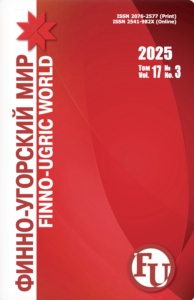DOI: 10.15507/2076-2577.010.2018.04.098-104
Shaman elements in the Mari costume
Anzhelika N. Pavlova,
Doctor Sc. {History}, Head of the Department of History and Psychology,
Volga State University of Technology
(Ioshkar-Ola, Russia), angpan@rambler.ru
Shamanism is known among various ethnic groups in Asia, Oceania and America, including the Ugric peoples of Siberia. The problem of Mari shamanism remains controversial to this day. It offers to look at it from the point of view of the preservation of shamanic elements in the traditional Mari costume.
The paper is based on ethnographic and archaeological sources, which are considered within interdisciplinary approach using the methods of historicism, semiotics, structural and functional analysis.
The Mari costume, developing over the centuries, has preserved the main symbolic dominants. The traditional Mari costume was a reflection of mythical cosmology, just like a shaman’s costume. In the symbolism of the Mari costume, one can also find ancient images of shamanic patron spirits.
The preservation of shaman elements in the Mari costume can be both a reflection of the archaic layer of Finno-Ugric mythology, and the result of contacts with the Ugric world.
Key words: traditional culture; shamanism; shamanistic attire; Mari costume; cosmology; shamanic animals.
For citation: Pavlova AN. Shaman elements in the Mari costume. Finno-ugorskii mir = Finno-Ugric World. 2018; 4: 98–104. (In Russian)






















